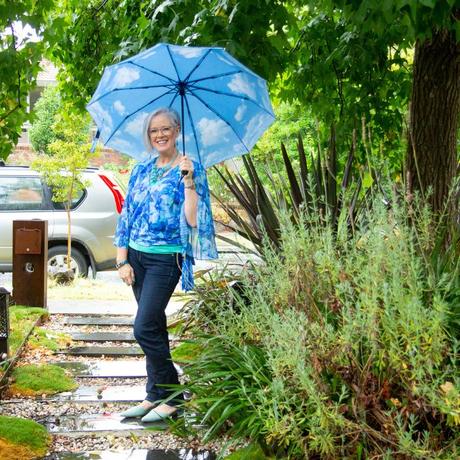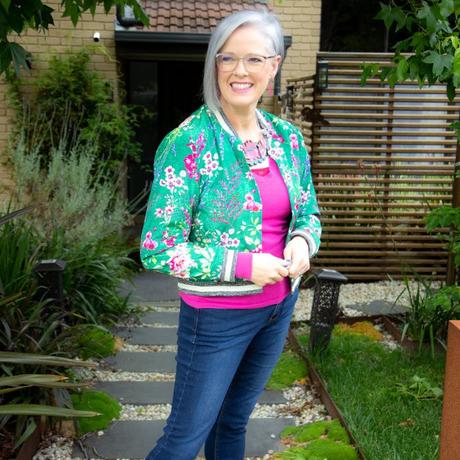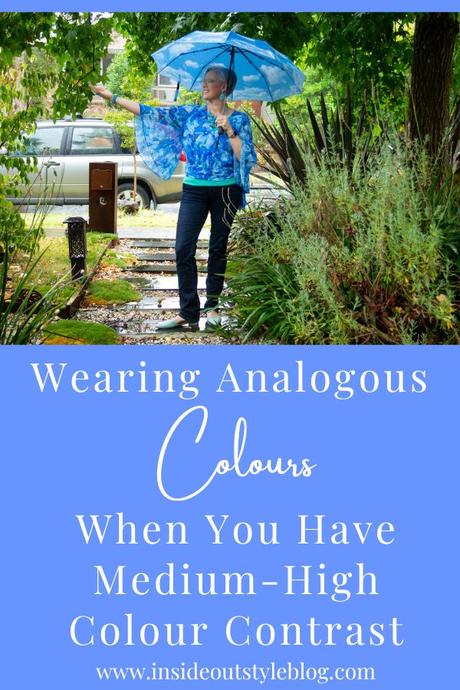What are analogous colors?
Analogous colors are colors that are adjacent to each other on the color wheel and share a similar hue. They create a cohesive and harmonious color scheme when used together in design or art. On a colour wheel, these are the colours that are next to each other and they have a softer effect when we look at them together.
Here's an analogous scheme in blues and green - it has a restful appearance.
What is Medium to High Colour Contrast?
Colour contrast relates to your own natural colouring and creating harmony and balance with you. Your colour contrast comes from looking at the colours of your eyes, skin and hair and wearing colours and determining how many colours you have naturally occurring in your colouring and how different they are from each other - read up about it here - and discover your colour contrast here)
Medium to high color contrast in clothing refers to wearing a combination of colors that have a noticeable difference in colour. This means that the colors used in the clothing have a strong visual impact and stand out from each other.
If someone has medium-high color contrast, they need to consider incorporating several colors into their outfit that complement their skin tone and create a balanced contrast. Wearing head-to-toe neutrals may not accentuate their features and will look dull.
Here's a complementary colour scheme (pink and green) though the blue jeans and green are analogous - and it's a much more exciting and vibrant scheme - for me to pull it off I wear matching pink lipstick and more colourful eye makeup.
Rather than wearing all neutrals or just one colour with neutrals. Why not think about wearing analogous colours that have a warm overtone - so reds/pinks/oranges/yellows as they are more advanacing and will draw attention and make your outfit look more colourful than it is.
How to put them together
Anyone can wear analogous colours. To wear analogous colors, choose colors that are next to each other on the color wheel (e.g. blue and green or orange and yellow). You can wear them in different shades or tints to create a harmonious and cohesive look. For example, pairing a light blue shirt with dark green pants or a yellow top with orange accessories. The greater the distance between the colours on the colour wheel, the greater the visual difference between the colours which creates the illusion of more colour.
With analogous colors so closely related, it's easy for them to blend into each other, resulting in a confused look that can be visually overwhelming. Using the interior decorating concept of the 60/30/10 rule - that is percentages of different colours to use in a decorating scheme - will help keep the look balanced.
Colour is a passion of mine, and helping people find the colours that truly make them shine is something I've been doing for the past 2 decades and I know just how much wearing colours that harmonise with your natural colouring really makes a massive difference to how you look and feel. If you'd like my professional opinion on your colouring - you get a personal colour analysis as part of my 7 Steps to Style program or as a stand alone service. There is also lifetime access to my Colour Masterclass included with 7 Steps to Style to help you nail down how to use colour in your outfits - in a way that harmonises beautifully with your unique colouring.
Find out more...
How Much Of Each Colour Should I Wear When Combining Colours?
How to Include More Interest and Unique Colour Combinations in Your Outfits
How to Use a Colour Wheel to Create Outfits
How to Wear Your High Colour Contrast When Your Personality Prefers to Blend-In

i


